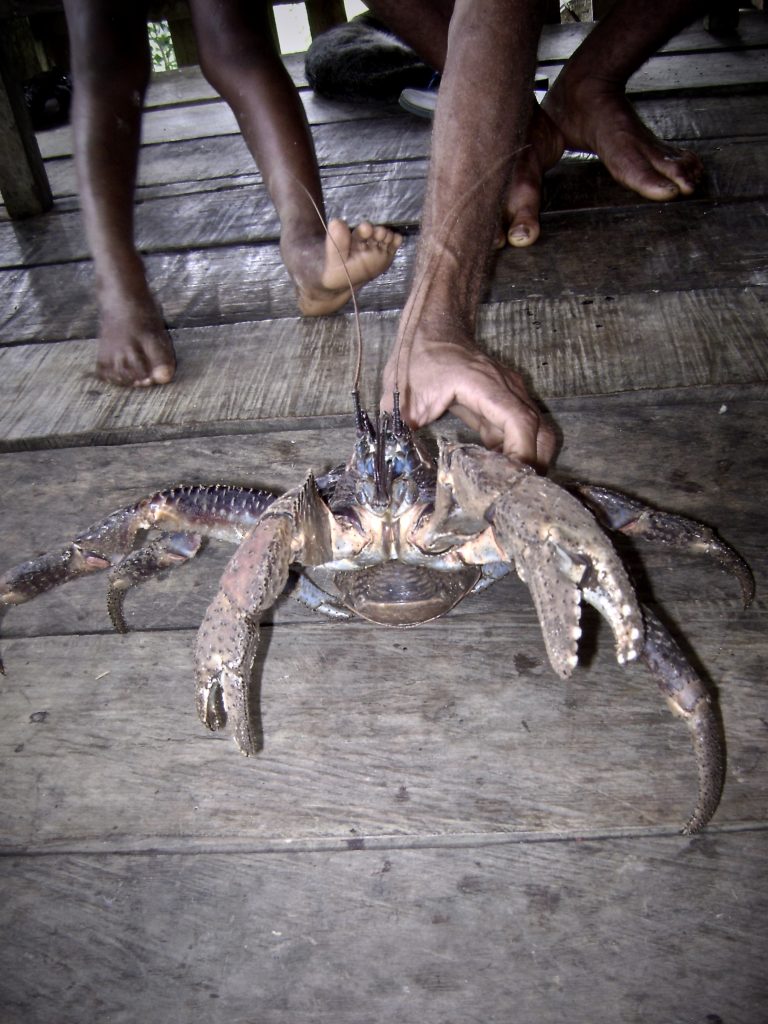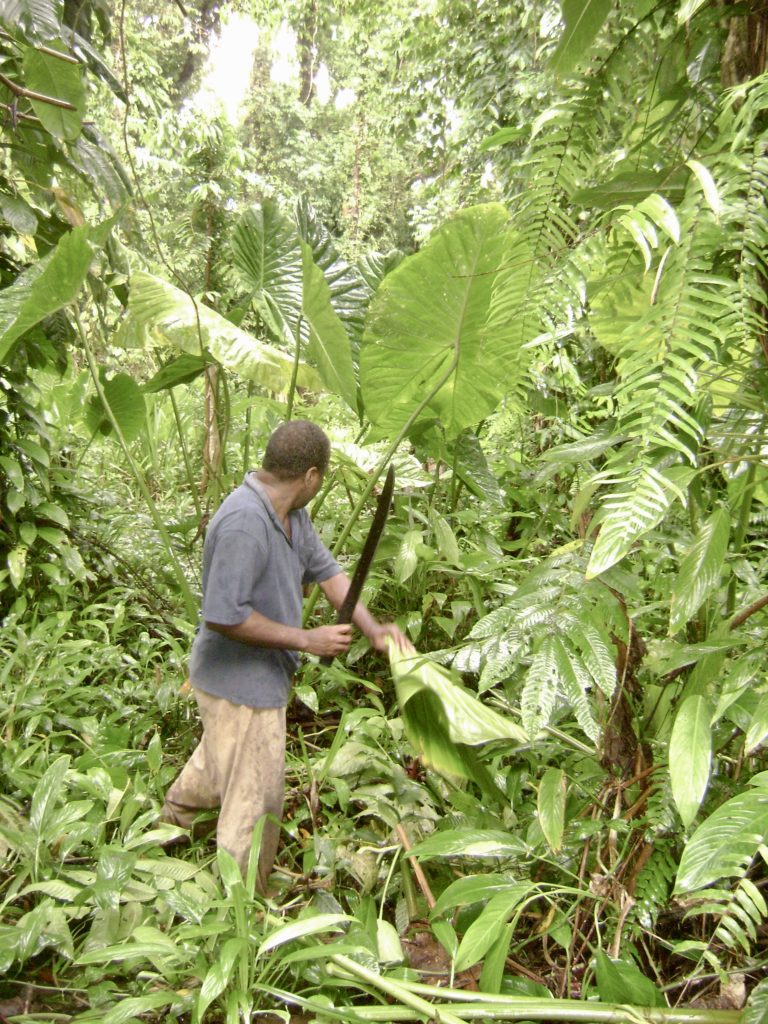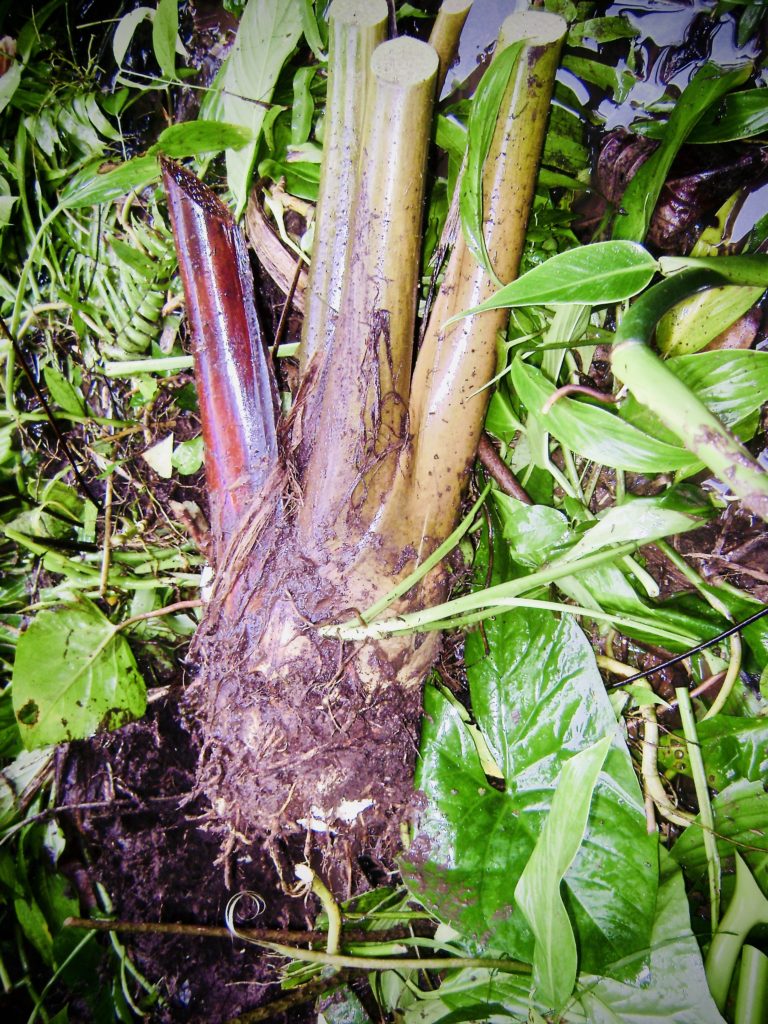Malaita Village Life Part Two: Sources of Food
Originally posted at: http://samsusa.org/2018/02/14/malaita-village-life-part-two-sources-of-food/
14
If you ran out of food at your house today, chances are you’d hop in your car, or walk down the street, to the nearest grocery or convenience store, pay some money and come home with enough food to feed your family. Otherwise you might order a pizza or go out to eat at a restaurant. But what would you do if the grocery stores and restaurants were closed, or, as is the case in many places in Malaita, the stores were too far away to walk to or drive to?
In many of the villages in Malaita, especially in the East and the South where there is little road access, families must eat what they can hunt, gather, and grow. Fortunately, the natural ecology of Malaita provides a smorgasbord of well adapted species of plants and animals that are suitable for human consumption—many of which grow and run wild!

In this picture my new friend is showing me an amazing creature—the coconut crab! Coconut crabs receive their name from their main source of food—coconuts. The crab has strong pincers both fore and aft allowing it to husk and crack open the coconut’s shell. Coconuts can be cut in half and set out as bait to catch the crabs in the middle of a tasty lunch.
Another wild food that grows in many places is swamp taro, or kakama in the local language. Kakama is an “emergency” or “poverty” food that is planted as an insurance crop. It is planted in swampy land not suitable for other forms of cultivation. Once planted, it requires no maintenance and can keep for over ten years. Kakama is not an everyday food, but is often harvested for inquisitive guests (such as myself) and is always available in the event of calamity, thus making it a staple for basic food security in the Solomon Islands.


